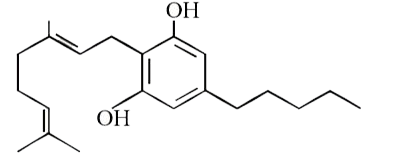Muscles are attached to the skeletal structures by
connective tissue sheath
ligaments
tendons
all the above
The correct Answer is:C
Step-by-Step Solution:
1. Understanding the Question:
The question asks how muscles are attached to skeletal structures. We need to identify the correct term that describes this attachment.
2. Analyzing the Options:
The options provided are:
- A) Connective tissue sheath
- B) Ligaments
- C) Tendons
- D) All of the above
3. Explaining Each Option:
- A) Connective tissue sheath: This refers to the dense connective tissue that surrounds the entire muscle, known as the epimysium. While it plays a role in muscle structure, it does not directly attach muscles to bones.
- B) Ligaments: These are fibrous connective tissues that connect bone to bone. They provide stability to joints but do not attach muscles to bones.
- C) Tendons: Tendons are cord-like structures that attach skeletal muscles to bones. They are crucial for transmitting the force generated by muscles to move the skeletal system.
- D) All of the above: This option suggests that all the previous options are correct, but based on the definitions, this is not accurate.
4. Identifying the Correct Answer:
The correct answer is C) Tendons, as they are specifically responsible for attaching muscles to skeletal structures.
5. Conclusion:
Therefore, muscles are attached to skeletal structures by tendons.
---
The question asks how muscles are attached to skeletal structures. We need to identify the correct term that describes this attachment.
The options provided are:
- A) Connective tissue sheath
- B) Ligaments
- C) Tendons
- D) All of the above
- A) Connective tissue sheath: This refers to the dense connective tissue that surrounds the entire muscle, known as the epimysium. While it plays a role in muscle structure, it does not directly attach muscles to bones.
- B) Ligaments: These are fibrous connective tissues that connect bone to bone. They provide stability to joints but do not attach muscles to bones.
The correct answer is C) Tendons, as they are specifically responsible for attaching muscles to skeletal structures.
Therefore, muscles are attached to skeletal structures by tendons.
Topper's Solved these Questions
- STRUCTURAL ORGANISATION IN ANIMALSBOOK - AAKASH SERIESCHAPTER - STRUCTURAL ORGANISATION IN ANIMALSEXERCISE - EXERCISE-I (ORGAN AND ORGAN SYSTEM)
4 Videos
- STRUCTURAL ORGANISATION IN ANIMALSBOOK - AAKASH SERIESCHAPTER - STRUCTURAL ORGANISATION IN ANIMALSEXERCISE - EXERCISE-I (EARTHWORM - EXTERNAL CHARACTERS)
17 Videos
- STRUCTURAL ORGANISATION IN ANIMALSBOOK - AAKASH SERIESCHAPTER - STRUCTURAL ORGANISATION IN ANIMALSEXERCISE - EXERCISE-I (CONNECTIVE TISSUE)
111 Videos
- STRATEGIES FOR ENHENCEMENT IN FOOD PRODUCTIONBOOK - AAKASH SERIESCHAPTER - STRATEGIES FOR ENHENCEMENT IN FOOD PRODUCTIONEXERCISE - EXERCISE-III
68 Videos
- THE LIVING WORLD BOOK - AAKASH SERIESCHAPTER - THE LIVING WORLD EXERCISE - EXERCISE-III (Previous AIPMT/NEET Questions)
12 Videos
Similar Questions
Eye muscles are attached with
View SolutionBones are attached to skeletal muscle by
View SolutionMuscle that is attached to the malleus is
View SolutionWhich of the muscles are attached to bones?
(a) Smooth muscles
(b) Skeletal muscles
(c) Cardiac muscles
(d) All the above
View SolutionSkeletal muscles come under the broad category of muscle tissue for the animals. How many of the following statements are correct related to the skeletal muscles.
I. They are closely attached to bones.
II. These are involuntary in the activity.
III. They are typically found within the blood vessel
IV. Several muscle fibers are enclosed by a sheath of connective tissue.
View Solution
Diagram is showing, skeletal structure of .
View SolutionA skeletal muscle fibre is
View SolutionAssertion :− Skeletal muscles are closely associated with the skeletal components of the body.
Reason :− Skeletal muscles are primarily involved in locomotory actions and changes of body postures.
View Solution______muscles are closely associated with the skeletal components of the body.
View Solution
Diagram is showing skeletal structure of :-
View Solution
